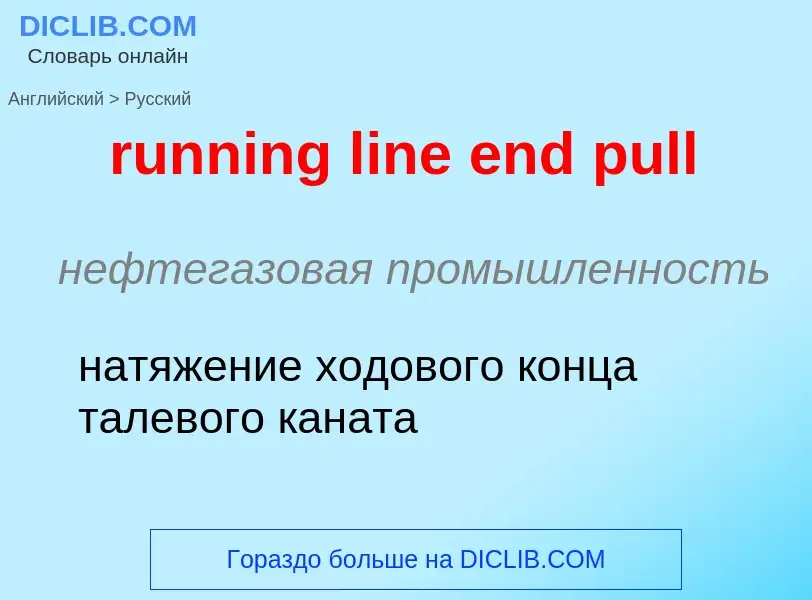Μετάφραση και ανάλυση λέξεων από την τεχνητή νοημοσύνη ChatGPT
Σε αυτήν τη σελίδα μπορείτε να λάβετε μια λεπτομερή ανάλυση μιας λέξης ή μιας φράσης, η οποία δημιουργήθηκε χρησιμοποιώντας το ChatGPT, την καλύτερη τεχνολογία τεχνητής νοημοσύνης μέχρι σήμερα:
- πώς χρησιμοποιείται η λέξη
- συχνότητα χρήσης
- χρησιμοποιείται πιο συχνά στον προφορικό ή γραπτό λόγο
- επιλογές μετάφρασης λέξεων
- παραδείγματα χρήσης (πολλές φράσεις με μετάφραση)
- ετυμολογία
running line end pull - translation to ρωσικά
нефтегазовая промышленность
натяжение ходового конца талевого каната
общая лексика
обегающий
Ορισμός
Βικιπαίδεια
An end-stopped line is a feature in poetry in which the syntactic unit (phrase, clause, or sentence) corresponds in length to the line. Its opposite is enjambment, where the sentence runs on into the next line. According to A. C. Bradley, "a line may be called 'end-stopped' when the sense, as well as the metre, would naturally make one pause at its close; 'run-on' when the mere sense would lead one to pass to the next line without any pause."[1]
An example of end-stopping can be found in the following extract from The Burning Babe by Robert Southwell; the end of each line corresponds to the end of a clause.
The following extract from The Winter's Tale by Shakespeare is heavily enjambed.
In this extract from The Gap by Sheldon Vanauken, the first and third lines are enjambed while the second and fourth are end-stopped:
Scholars such as Bradley and Goswin König have estimated approximate dates of undated works of Shakespeare by studying the proportion of end-stopping to enjambment, the former being more typical of Shakespeare's early plays, the latter a feature of his later plays.

.jpg?width=200)



![Maximum human speed [km/h] and pace [min/km] per distance Maximum human speed [km/h] and pace [min/km] per distance](https://commons.wikimedia.org/wiki/Special:FilePath/Human speed distance portrait.png?width=200)
![A scene depicting long-distance runners, originally found on a [[Panathenaic amphora]] from Ancient Greece, circa 333 BCE A scene depicting long-distance runners, originally found on a [[Panathenaic amphora]] from Ancient Greece, circa 333 BCE](https://commons.wikimedia.org/wiki/Special:FilePath/Long Distance Runners, Ancient Greece, Amphora.png?width=200)
![[[Eadweard Muybridge]] photo sequence [[Eadweard Muybridge]] photo sequence](https://commons.wikimedia.org/wiki/Special:FilePath/Muybridge runner.jpg?width=200)
![Roman bronze sculptures]] of runners from the [[Villa of the Papyri]] at [[Herculaneum]], now in the [[Naples National Archaeological Museum]] Roman bronze sculptures]] of runners from the [[Villa of the Papyri]] at [[Herculaneum]], now in the [[Naples National Archaeological Museum]]](https://commons.wikimedia.org/wiki/Special:FilePath/Runners MAN Napoli Inv5626-7 n02.jpg?width=200)
![International-level women athletes competing in 100 m sprint race at [[ISTAF Berlin]], 2006 International-level women athletes competing in 100 m sprint race at [[ISTAF Berlin]], 2006](https://commons.wikimedia.org/wiki/Special:FilePath/Sina Schielke (192) wins the 100 metres race - ISTAF 2006 - Berlin, 3 September.jpg?width=200)
